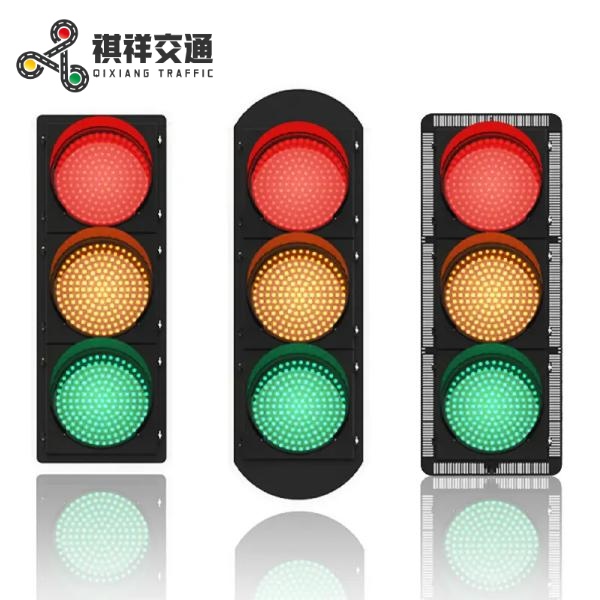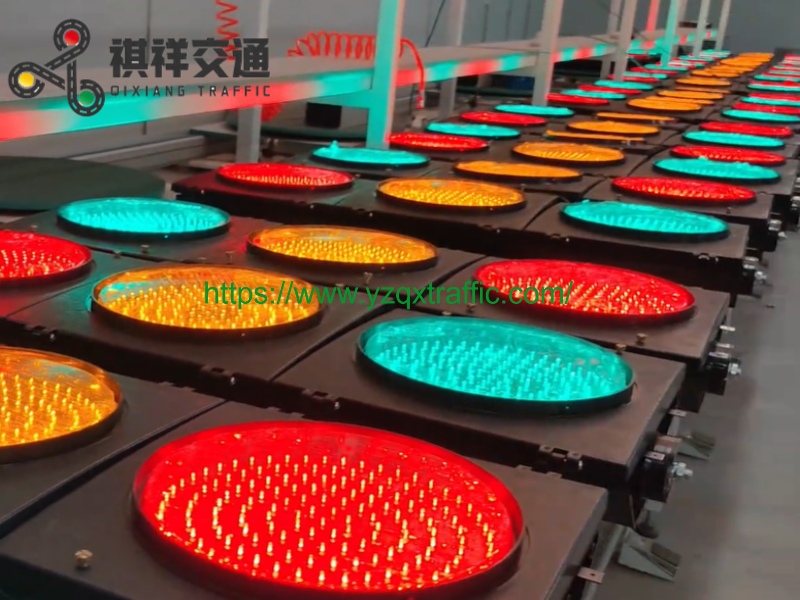Traffic signals are a crucial tool for strengthening road traffic management, reducing traffic accidents, improving road efficiency, and improving traffic conditions. Today, traffic signal manufacturer Qixiang will take a look at its many classifications and functions.
 From chip selection to finished product, Qixiang puts every traffic signal through rigorous testing, resulting in an average service life exceeding 50,000 hours. Whether it’s an intelligent coordinated traffic light for urban arterials or an economical product for rural roads, they all offer high-end quality without a premium price.
From chip selection to finished product, Qixiang puts every traffic signal through rigorous testing, resulting in an average service life exceeding 50,000 hours. Whether it’s an intelligent coordinated traffic light for urban arterials or an economical product for rural roads, they all offer high-end quality without a premium price.
Classification and Functions
1. Green Light Signal
A green light is a signal that allows traffic. When green, vehicles and pedestrians are allowed to pass. However, turning vehicles must not obstruct vehicles and pedestrians traveling straight ahead.
2. Red Light Signal
A red light is an absolute signal that prohibits traffic. When red, vehicles are prohibited from passing. Vehicles turning right may pass as long as they do not obstruct vehicles and pedestrians traveling right ahead.
3. Yellow Light Signal
When the yellow light is on, vehicles that have crossed the stop line may continue to pass.
4. Flashing Warning Light
This continuously flashing yellow light reminds vehicles and pedestrians to look out and only cross when they are sure it is safe. This light does not control traffic flow or yielding. Some are suspended above intersections, while others, when the traffic light is out of service at night, use only the yellow light and flashing lights to alert vehicles and pedestrians to the intersection ahead and to proceed with caution, observe carefully, and pass safely. At intersections with flashing warning lights, vehicles and pedestrians must adhere to safety regulations and follow the rules for intersections without traffic signals or signs.
5. Direction Signal Light
Direction signals are specialized lights used to indicate the direction of travel for motor vehicles. Different arrows indicate whether a vehicle is going straight, turning left, or turning right. They are composed of red, yellow, and green arrow patterns.
6. Lane Light Signals
Lane lights consist of a green arrow and a red cross. They are installed on the lanes that are adjustable and operate only for the lane in which they are intended. When the green arrow is illuminated, vehicles in that lane are permitted to pass in the indicated direction; when the red cross or arrow is illuminated, vehicles in that lane are prohibited from passing.
7. Pedestrian Crossing Light Signals
Pedestrian crossing lights consist of red and green lights. The red light mirror features a standing figure, while the green light mirror features a walking figure. Pedestrian crossing lights are installed at both ends of the crosswalk at important intersections with heavy pedestrian traffic. The light head faces the roadway and is perpendicular to the center of the road.
If you are considering selecting a traffic signal, please feel free to contact us. We will provide you with a detailed plan and quote as soon as possible. We look forward to becoming your reliable partner in the transportation infrastructure industry.
Post time: Aug-05-2025







